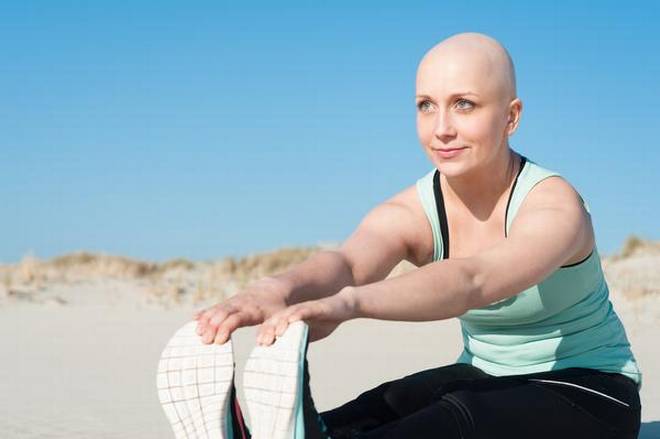The American Cancer Society talks of ways in which physical activity can benefit someone with cancer. While rest and recovery is very important, so is movement. But the kind of movement depends on a number of factors, including the kind of cancer, surgery, the type of treatment, the person’s mental and physical condition. A new kind of rehab fitness trainer is now emerging: someone who is qualified to take a person from diagnosis to recovery. Here, Vani Bhalla Pahwa, a cancer exercise specialist (CES) tells us what the profession is all about.
Who is a cancer exercise specialist?
Simply put, a CES is someone who helps with exercise and recovery of people diagnosed with cancer, always working with the oncologist. She will assess the person on various parameters, including exercise/health history, cancer treatments (including any in the past), how the person is responding to or tolerating these, and then carefully design and implement physical recovery programmes. She will coax, encourage, motivate, and know how much to push and when, in a safe and effective manner.
What kind of training does a person who qualifies as one, undergo?
A CES qualification includes the study of exercise for 25 types of cancers, (including paediatric). It also studies surgery, reconstruction, treatments, medication. Cancer-related pain, the mental and physical fatigue during treatment, and neurological complications are all touched upon. There are often posture and range-of-motion problems, all of which form an important part of the recovery. For example, breast reconstruction after mastectomy often leads to limitations in the shoulder and upper body movement. These can be corrected to a great extent if appropriate exercises are introduced as soon as it is safe for the person to exercise. The longer one holds off any rehabilitation, the more difficult it is, not only to address it, but to live pain-free and well.
Who can typically get such training?
Medical and fitness professionals who have a strong working knowledge of anatomy and physiology, and meet recommended pre-qualification competencies and work experience.
Who needs this sort of exercise?
Anyone at risk of developing cancer again, has been diagnosed with cancer, is undergoing cancer treatment, or is recovering from cancer surgery/treatment. It helps with regaining strength (muscle and cardiovascular), flexibility (where range of motion is impacted) and weight management (both when there is weight loss or gain). At the mental and emotional level, it helps the person feel more in-charge, positive and psychologically empowered.
Why do we need this area of specialisation today?
While a number of disciplines have structured rehab programs in hospitals, cancer does not. The incidence of the disease has been growing endemically over the years, across gender and ages. Exercise decreases the risk of future cancers or recurrences, minimises treatment side-effects and allows people the possibility of returning to their previous level of fitness (or perhaps better — if the person was totally sedentary before). Chemotherapy and radiation can have a detrimental effect on the heart and lungs. Prolonged inactivity can lead to muscle wastage. Regular, supervised cardiovascular and other strengthening and stretching exercise can provide benefits. But since cancer has many contraindications to be mindful of, a specialist in this domain is better able to address such needs safely, without further jeopardising the person’s health.
How is exercise after cancer treatment different from regular exercise?
Along with the type and stage of cancer, what treatment the person is undergoing, or has undergone, becomes an important parameter in any exercise-recovery prescription. Radiation and chemotherapy can have a localised or general impact; surgeries (if any) affect the body differently, depending upon the site and whether any reconstruction is required; the frequency of ongoing treatment — these are just some of the concerns involved. Each cancer is different and so is each individual’s response to it. Without a detailed knowledge of these and an understanding of side-effects and contraindications, it is not recommended for anyone to prescribe an exercise programme. However well-meaning it may be, the potential to do more harm than good cannot be overlooked. Hence, it may not be possible to apply the same logic to cancer exercise programming that is applied to healthy individuals.
When is a good time to start exercise — during or after cancer treatment?
When an exercise programme can be initiated would depend upon the cancer diagnosis, the person’s treatment protocol, their response to the treatment, and what their doctor says, at any stage.
source:-.thehindu.
